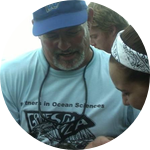About This Project
We will correlate environmental conditions and how they affect fungal pathogen abundance in leatherback sea turtle nests. We know that different environmental conditions affect sea turtles and alter their behavior, but we don’t know how environmental conditions affect fungal growth in sea turtle nests and and how this affects hatchling success rates. Inoculation of Yellow-Belly Slider eggs with the fungal pathogen will help link this species of fungus to an increase in hatchling mortality rates.
Ask the Scientists
Join The DiscussionWhat is the context of this research?
Research performed by Dr. Sarmiento-Ramirez and his group of researchers in 2014 brought light to the possibility that this species of fungus could be the cause of the high mortality rates that he and his team found among five different sea turtle species in several locations worldwide.
What is the significance of this project?
There are many conservation programs in place globally that focus on maintaining leatherback sea turtle populations. Even without a full understanding of this fungus and its relationship with sea turtle eggs, these agencies face an uphill battle. While no one knows whether or not there is a direct link between this fungus and the documented increase in leatherback sea turtle hatchling mortality rates, if there is indeed a link, then we must address this issue to ensure the stabilization of sea turtle hatchling success and increase their population.
What are the goals of the project?
We will survey a portion of the Eastern coast of Costa Rica, near the Pacuare Nature Reserve, to estimate the abundance of fungal pathogens in Leatherback sea turtle nests. We will collect at least 3 soil samples at nest depth, at regular intervals along a transect parallel to the shoreline in the zone with the greatest density of body pits. We plan to sample a total of 50 nests. Each nest will be tested using devices for environmental conditions.
In the lab, we will test how the abundance of the fungus affects mortality rates in freshwater turtle eggs. We plan to inject each egg with 0.5 mL of fungus at a concentration range of 100-100k spores/mL/per egg.
The data collected in the field and analyzed in the lab will be used to estimate the abundance of the fungal pathogen in the wild.
Budget
I plan to travel to Pacuare Nature Reserve next year to do the field work. We already have the equipment and materials needed for the trip, but I need to physically get there. The remaining funds will be used for PCR analysis in the lab.
Endorsed by
Meet the Team
Jon-Erik Taylor
I am currently completing my Master's degree in the Coastal and Marine Systems Science program at Coastal Carolina University. I have an Associates degree in Surgical Technology from Sanford-Brown College and a Bachelor's degree in Biology from Webster University.
Press and Media
http://blogs.webster.edu/globalthinking/2015/02/23/biology-graduate-making-waves/
Project Backers
- 40Backers
- 100%Funded
- $2,500Total Donations
- $51.28Average Donation

